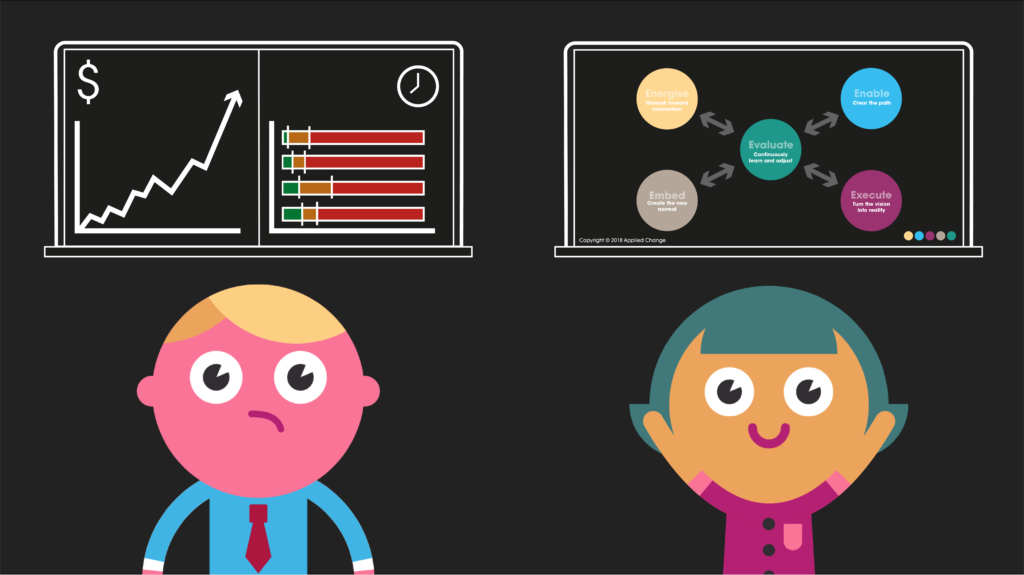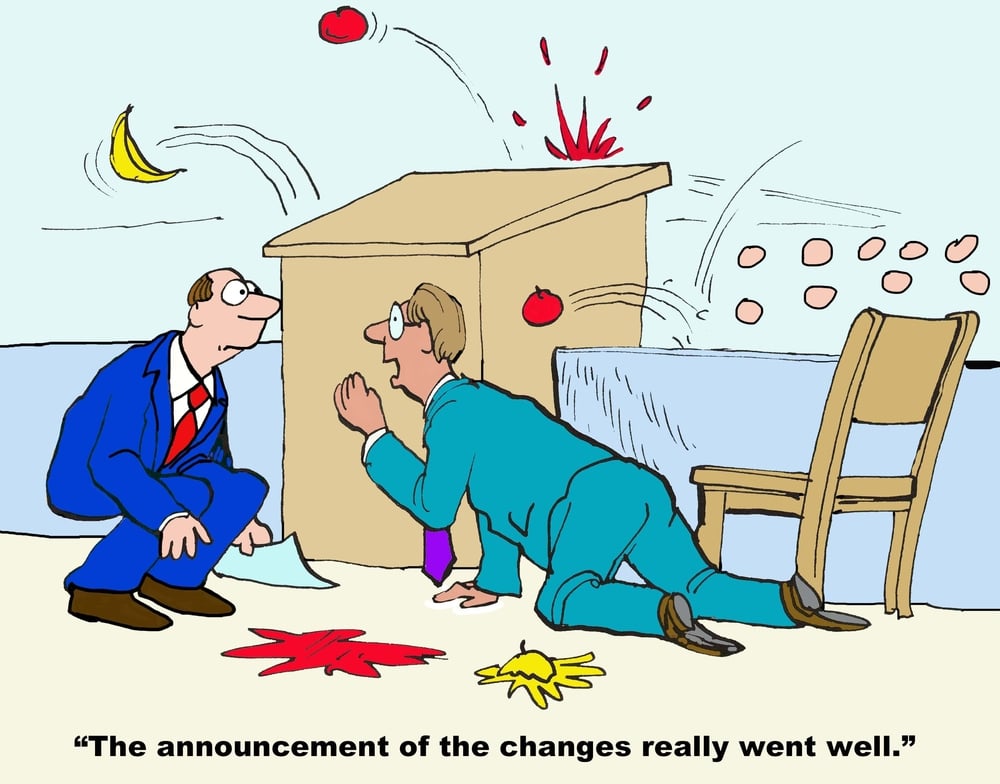How are employees really feeling about your transformation programme?
By Mark Vincent
Share

How compelling is your vision for change?
It’s October 2022 and Pete is in his small back room home office, surrounded by paper. It’s grey outside and the leaves are already starting to fall. He’s dreading this training session. Hours spent staring at a screen while a trainer drones on about this new Customer Relationship Management system.
He thinks to himself: “I’m 56 and been doing sales all my life, the last 20 years in pharma. I’ve worked hard to build my reputation and the relationships I have. I know how to sell, so I really don’t see what this is going to do for me. I want to just get on with my day, I have loads to do and those targets won’t achieve themselves!”.
There had been talk of the new system for months, his email inbox had been flooded with emails talking about the “Improved Customer Engagement Journey”, he’d scanned a few and binned the rest. “Who has the time to read all these emails anyway? We have a job to do!”
The trainer seems pleasant enough, so he tries his best to hold back his frustration. It’s not her fault, she’s just doing her job. His mind drifts, he can’t help reflecting on a conversation he’d had with his sales colleagues, Jaz and Anne, the other day:
Pete: “Do you know why they are implementing this new system?”
Jaz: “I expect it’s a way to check up on us, how many emails we’ve sent and calls we’ve made. Like that’s going to make us great at sales eh! Great at admin more like. So now I’m going to be spending another hour a day in front of a screen! And you know what I’m like with IT, I’ll most likely break something!”
Anne: “I’ve heard rumours they are looking to streamline sales and marketing to reduce heads. You know what this lot are like when it comes to that kind of thing. They say one thing and then do something else.”
The lessons?
It’s human nature to create our own negative story if we don’t see a strongly positive one, one that resonates with us at personal level. In this case fear of the unknown and the motives of the leaders is driving the narrative, most likely due to past experience.
We are hardwired for self-protection, which is why media headlines tend to focus on the negatives, to startle us, so we’ll read on and therefore they can sell more advertising or newspapers. Consider your own feelings and behaviours if you are unsure about something and unsure about the motives of others, especially those who can influence your life in a big way.
In most large change or transformation programmes those negative feelings and stories go completely unnoticed, until it’s running late, often very late and way over budget.
It’s scientifically proven that when you have employees truly engaged and feeling empowered they are far less likely to suffer burnout or to leave the company and change will happen more quickly and with more energy.
Change Journey Navigator has been uniquely designed to bring unparalleled measurement and focus to the human side of change. You will see instantly where to focus your attention to increase the engagement and ownership of employees in your transformation, leading to better outcomes, faster pace and a far lower risk of attrition and burnout.
For more information and to try the free version go to: https://appliedchange.co.uk/engaging-your-people/
Get in touch
If you’re not achieving your goals or want get more done in your business, we can help.
Whether it’s supporting you, growing your leadership team or directly helping you to make something happen, contact us on (+44) 0800 612 3548 or click the button below.
Alternatively sign up below to be the first to know about our events and receive free resources and insider tips.
Related content
Help Needed: Change Resistance Research at UWE Bristol
Has your organisation undergone a change recently that has affected you? Or have you been responsible for delivering a change at work? If so then maybe you could help us with some research we are working on with UWE in Bristol.
Unlocking Change: Why Psychological Safety is Your Secret Weapon
Psychological safety is the foundation of successful business transformation. Here’s how to empower employees, foster trust and ensure a successful change journey.
Why most change happens too slowly, and what to do about it
Is the retail sector teaching us a valuable lesson? Why are previously successful businesses failing to keep the initiative? And what can other sectors learn?
Organisational Change – Why do we always focus on schedule and budget?
When delivering change, focusing too much on schedule and budget tends to take our attention away from the only factor that will ensure success.
Change Readiness
Knowing the right thing to do is very different from doing the right thing. We can all think of good examples. Change readiness is about giving us (whether individually or as a team) the best chance of having our behaviours more closely match our good intentions.
How to Deal with a Resistant Team
You may have noticed that we can all be resistant to change at times. Here we take a deeper look at why we typically resist and what can be done to ease that resistance







